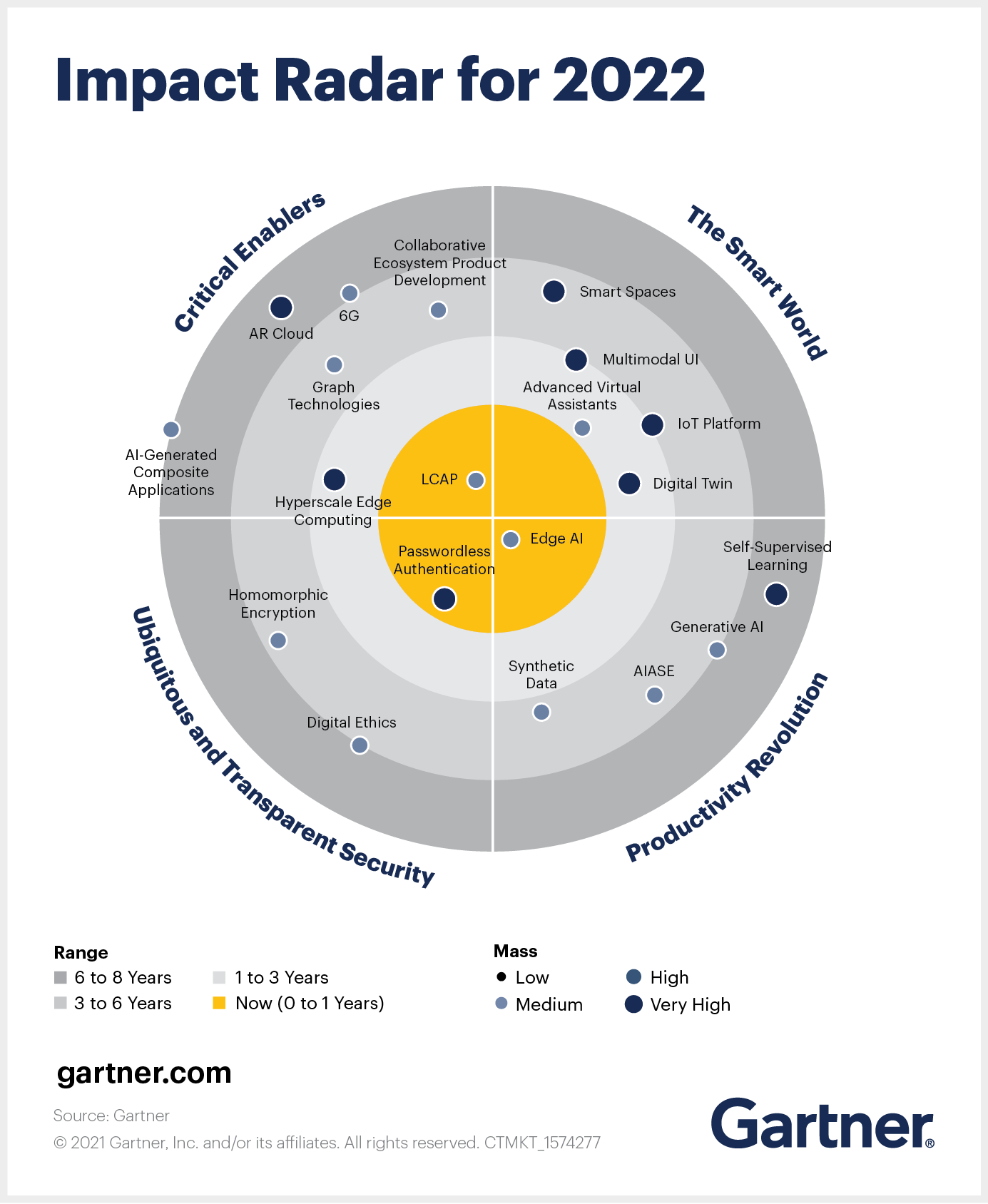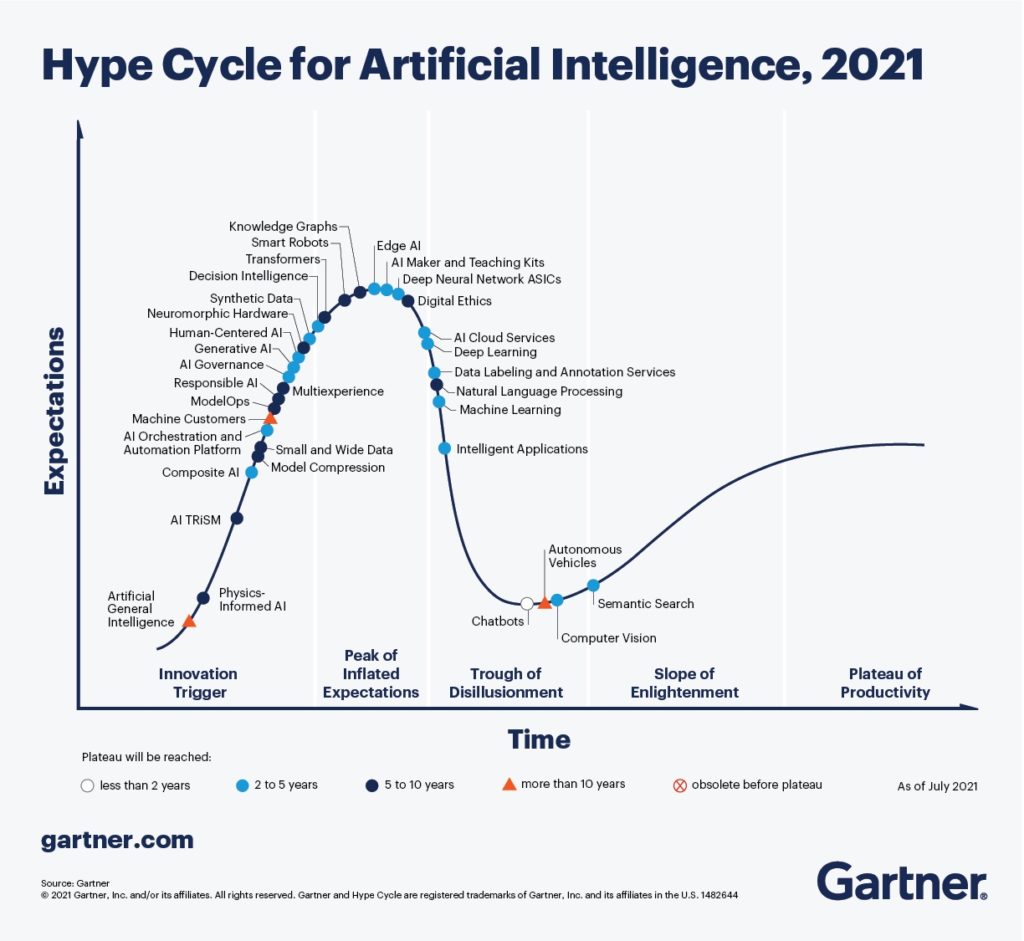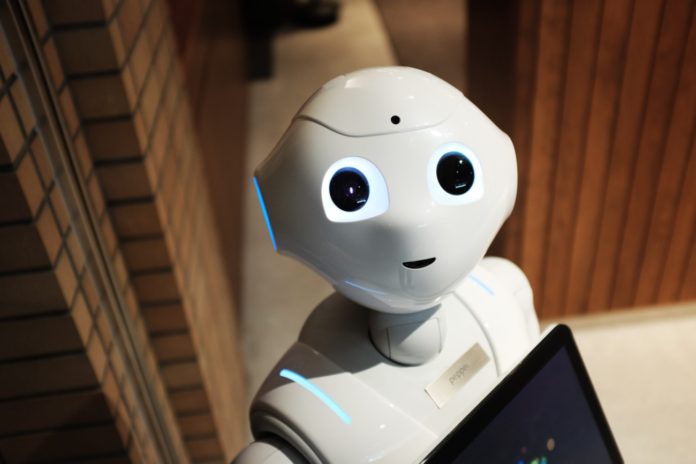Generative Artificial Intelligence (AI) is a relatively new buzzword in the field of Artificial Intelligence. This disruptive tech is one of the most impactful emerging technologies and trends of 2022 and beyond. What exactly is Generative AI? What are the benefits?
According to Gartner, Generative AI refers to AI techniques that learn a representation of artifacts from the data and use it to generate brand-new, completely original artifacts that preserve a likeness to original data.
It can generate artifacts that previously relied on humans, without human bias. The new phase of emerging tech is building on the progress that basic AI has achieved over the years.
Generative AI learns from data and generates innovative new creations that are similar to the original but doesn’t repeat it.
Deploying AI and ML, Generative AI enables the creation of new content including text, images and audio/video. One could be tricked into believing the artificially generated content is real.
Generative AI has the potential to accelerate R&D cycles in fields ranging from medicine to product creation.
The field of generative AI will progress rapidly in both scientific discovery and technology commercialization.
Gartner on Generative AI, a high impact emerging technology
Generative artificial intelligence will improve digital products’ quality, performance and accessibility while reducing time to market. To gain these competitive advantages, software engineering leaders should introduce generative AI now by enacting changes to people, processes and tools.
While it is currently as futuristic as it gets, we are seeing successes in a wide range of applications, from creating new materials to preserving data privacy, Gartner notes.
“Exploration of generative AI methods is growing and proving itself in a wide range of industries, including life sciences, healthcare, manufacturing, material science, media, entertainment, automotive, aerospace, defence and energy.
Safety concerns and negative use, such as deepfakes, might slow adoption in some industries”.

Generative AI – The Key Data Points (Source: Gartner)
- Time to market: 6-8 years
- By 2026, Generative design AI will automate 60% of the design effort for new websites and mobile apps.
- By 2026, generative AI will create 50% of new website and mobile app code using machine learning models.
- By 2025, 30% of enterprises will have implemented an AI-augmented development and testing strategy, up from 5% in 2021.
- By 2025, generative AI will account for 10% of all data produced, up from less than 1% today
- By 2026, the role of design strategist — a blend of the current roles of designer and developer — will lead 50% of digital product creation teams.
- Potential to revolutionize digital Product Development
- By the end of 2024, 75% of enterprises will shift from piloting to operationalizing AI
- Industries Impacted: Life Sciences and Healthcare, Manufacturing, Design & Development, Media & Entertainment, and many more
The time to adapt is now. Organizations that do not position themselves to take benefits of the generative AI revolution will struggle to compete and will eventually fail.
As Enterprises move from piloting to operationalizing AI, Generative AI gains prominence
Gartner Report on AI
Also Read: The Top 6 Myths About AI

What are the benefits?
There are wide-ranging applications and benefits of this disruptive AI technology. “Generative AI has been confined mainly to research activities and internet memes of deep fakes.
In recent years, technology has progressed notably across a range of AI approaches, such as generative adversarial networks (GANs), self-supervised learning, transformers, variational autoencoders and autoregressive modelling”.
Gartner recommends “Maximize the potential benefits of generative AI by deploying it in use cases similar to those where it has demonstrated value in your industry and others”.
- Faster product delivery: Generative design AI promises to accelerate digital product delivery and improve operational efficiency more than any technology in the last 10 years.
- Improved accessibility: AI-generated designs and code are compatible with assistive technologies, like screen readers, and deliver the most accessible screen designs and code possible. This will drastically improve the digital lives of people with disabilities.
- Democratization of UX: More nonprofessional (or citizen) designers, researchers, and developers are engaging in UX tasks and must be able to produce high-quality experiences without deep design training or education.
- UX/UI design standardization: Most digital products are based on established product types and UI design patterns. The standardization of common digital experiences continues to expand.
Use Cases and Examples – Generative AI is an emerging technology with wide-ranging applications
Generative AI Is Poised to Revolutionize Digital Product Development
Creating synthetic counterparts of sensitive health data to develop AI models in Healthcare. Alder Hey Children’s NHS Foundation Trust, one of Europe’s leading pediatric healthcare institutions partnered with Diveplane to explore how synthetic data can enrich and advance the hospital’s state-of-the-art digital infrastructure, and build data-driven clinical impact to advance child health.
Generative AI for Advertising. Using historical data of advertising performance, develop new ideas for ads while being different from the previous ones. See this Clearbanc and Pencil partnership to use Creative AI for advertising.
Also, check out this report on Lexus’ “Emotional AI” ad. Lexus highlights the campaign is an “evolution of personalised advertising, using innovative facial recognition technology”.
Also Read: The AI Talent Crisis is a Myth
Limitations and Challenges
Generative AI is not a creative panacea. At least, not yet. But it will enable enterprises to further reallocate human resources to support higher-value creative work.
Despite the potential to create new IPs, the technology is far from being the solution.
Generative AI isn’t immune from human bias, although it can significantly reduce the bias. Also, what if Generative AI could be used to amplify bias?
Job Disruption – There are concerns about AI’s impact on social health. Generative AI can be used to generate software code, potentially affecting the jobs and livelihoods of many programmers.
French students used code to generate artwork which was sold for $432,000 at Christie’s.
The Deep Fake Challenge to Generative AI:
AI-generated News Presenter:
South Korean broadcaster MBN Channel presented news in late 2020. Everything seemed normal, except for the fact that the presenter on the screen was generated by AI. Moneybrain, the South Korean AI company and MBN plan to deploy AI-generated presenters for news as technology evolves.
Check out this report by BBC: Deep Fake is the future of content creation
Bringing ancestors to life, the Deep Fake way:
My Heritage, a Genealogy site introduced a tool using deep fake technology to animate the faces in photographs of dead relatives.
The feature called “Deep Nostalgia” does not include speech. “This feature is intended for nostalgic use, that is, to bring beloved ancestors back to life”, noted My Heritage.
There are deep fake examples including Deepfake Queen with Christmas message, Lincoln, Tom Cruise video and many more.
This only emphasises the view Generative AI could be harmful if left unregulated.
ITVibes Recommended Reading:
- The Top 10 Predictions For The Future of Innovation
- IDC Forecasts Worldwide AI Spending will double in four years
- The key drivers behind growing AI investment in Australia
- AI in Australia – The Key Projects and Highlights












